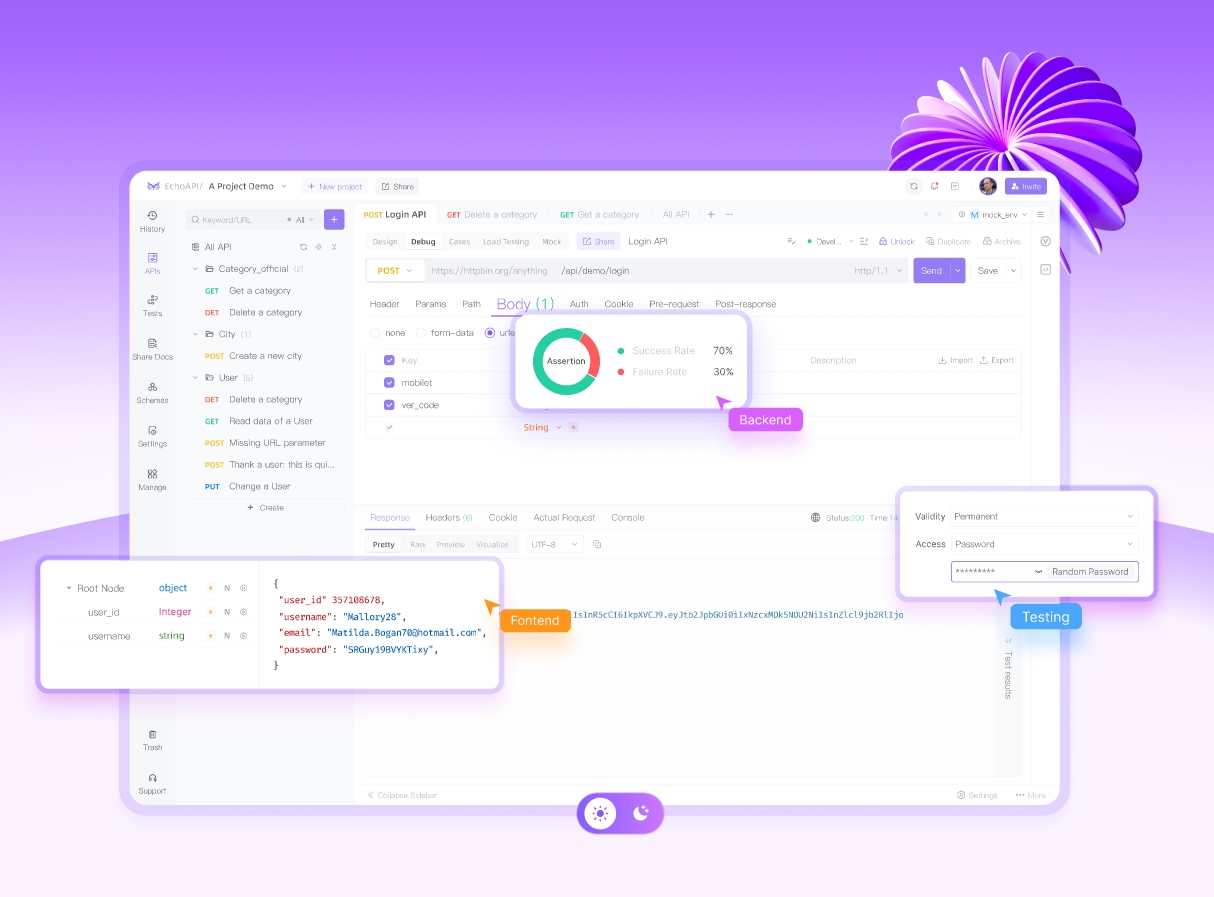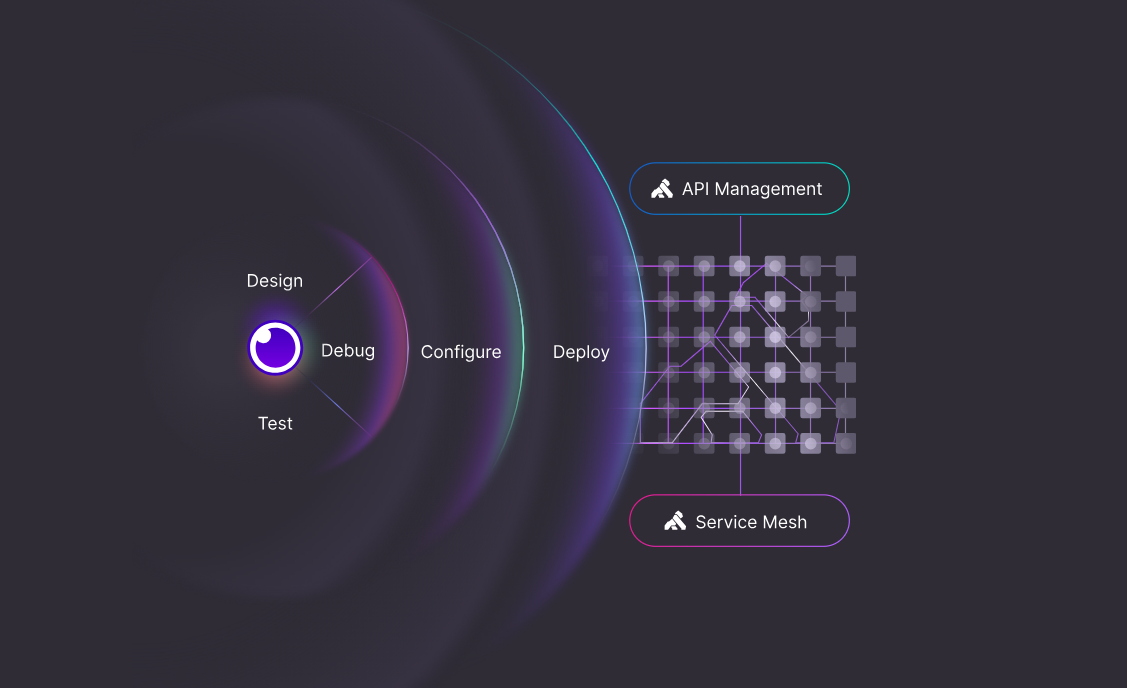EchoAPI vs. Insomnia: A Comparative Analysis for API Development
EchoAPI vs. Insomnia: A Comparative Analysis for API Development
In the world of API development, having robust tools for debugging, testing, and documentation is crucial. EchoAPI and Insomnia are two widely used tools in this space, each with its unique features and strengths. In this article, we'll compare the functionalities and benefits of both tools, using practical examples to help you decide which one to choose.

Introduction to EchoAPI and Insomnia
EchoAPI:
EchoAPI is well-regarded for its comprehensive features as an API debugging tool. It supports API testing, performance testing, automated testing, and one-click API documentation generation. Additionally, it offers convenient plugins such as:
EchoAPI Interceptor(Chrome Extension) : Captures API requests from web pages without needing to log in, allowing parameter changes and seamless synchronization with EchoAPI.
EchoAPI for IntelliJ IDEA: Generates, modifies, and debugs interfaces directly from your code as a Java plugin.
EchoAPI for VS Code: Adds, modifies, and debugs APIs with visual assertions and automated testing features.

Insomnia:
Insomnia is designed for RESTful APIs and GraphQL, emphasizing a simple interface and excellent user experience. It makes creating requests, managing environments, and generating API documentation straightforward.

Feature Comparison and Practical Examples
Let's compare the main features of EchoAPI and Insomnia, using practical examples:
1. API Debugging and Testing
EchoAPI: Offers a user-friendly and visually appealing interface for smooth and intuitive API management and testing. You can easily create and send API requests from the interface, addressing various test scenarios.
Insomnia: Ideal for developing user management RESTful APIs, Insomnia simplifies creating requests for adding, updating, and deleting users. Its environment variable feature allows quick switching between development, test, and production environments.

2. Automated Testing
- EchoAPI: With APIs retrieving user data, you can leverage EchoAPI’s automated testing feature to verify responses under different conditions. It allows you to write pre and post-scripts, set up tests, and use visual assertions to ensure the responses are as expected.

Insomnia: While Insomnia supports automated testing through custom tests in the "Test" tab and integration with third-party tools like Jenkins for continuous integration workflows.

3. Load Testing
EchoAPI: Built-in load testing feature allows you to simulate multiple requests to assess how your API performs under high traffic.

Insomnia: Does not have a direct load testing feature but you can export requests to tools like k6 or Apache JMeter for load testing.
Load Testing with Insomnia using k6
import http from 'k6/http';
import { check } from 'k6';
export let options = {
stages: [
{ duration: '1m', target: 100 },
{ duration: '1m', target: 200 },
{ duration: '1m', target: 0 }
]
};
export default function() {
let res = http.get('https://api.example.com/users');
check(res, { 'status was 200': (r) => r.status == 200 });
}
4. API Documentation
EchoAPI: Easily generate and share API documentation directly from your project with one click, ensuring your team or clients always have access to the latest API information.

Insomnia: Allows you to create detailed API documentation internally, generating and sharing it easily. However, maintaining sync with the codebase may require additional manual steps.
// Insomnia API documentation snippet
{
"name": "User Service API",
"requests": [
{
"method": "GET",
"url": "{{ base_url }}/users",
"description": "Fetch all users"
},
{
"method": "POST",
"url": "{{ base_url }}/users",
"description": "Create a new user",
"body": {
"username": "new_user",
"email": "new_user@example.com"
}
}
]
}
When to Choose Insomnia
Insomnia is suitable for:
GraphQL Support: You need robust GraphQL management due to heavy usage in your project.
Simplicity and Ease of Use: You want to manage RESTful requests with minimal setup and high intuitiveness.
Environment Management: Strong environment management is critical for projects with multiple stages (development, test, production).

When to Choose EchoAPI
EchoAPI is suitable for:
Offline Capabilities: You need offline access, secured by plugins available for IDEs and browsers.
Integrated Automation and Load Testing: Built-in features save you from using external tools for these functions.
Development Environment Integration: Plugins for IntelliJ IDEA and VS Code make API debugging and testing within the development environment seamless.
One-Click API Documentation: Simplifies creation and maintenance of up-to-date API documentation.

Conclusion
EchoAPI and Insomnia each offer powerful features that cater to different aspects of API development. Insomnia excels with its simple interface and robust environment management, making it great for straightforward RESTful and GraphQL projects. On the other hand, EchoAPI stands out with its automation, load testing, and seamless integration with development environments, providing a comprehensive offline-capable solution.
Understanding the strengths of each tool and referencing practical examples will help improve your API development efficiency and reliability. Happy API testing!
Try EchoAPI Interceptor today!